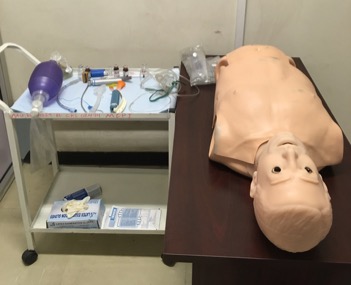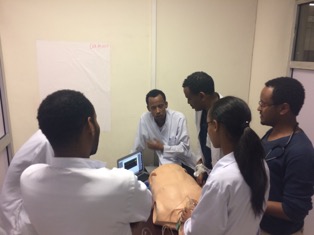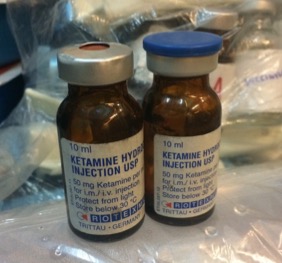This review on simulation teaching in a low resource setting was written by Alia Dharamsi, a PGY 4 in Emergency Medicine at The University of Toronto and 2017 SHRED [Simulation, Health Sciences, Resuscitation for the Emergency Department] Fellow after her Toronto- Addis Ababa Academic Collaboration in Emergency Medicine (TAAAC-EM) elective.
This past November I participated in an international elective in Addis Ababa, Ethiopia as a resident on the TAAAC-EM team. TAAAC-EM sends visiting faculty to teach and clinically mentor Ethiopian EM residents 3-4 times a year. Teaching trips cover a longitudinal, three-year curriculum through didactic teaching sessions, practical seminars, and bedside clinical supervision.
One of the areas of development identified by the residents was a yearning for more simulation exercises. As a budding simulationist and SHRED fellow, I was particularly keen to help contribute to the curriculum. Starting from the basics, we created two simulation curricula:
- Rapid Cycle Deliberate Practice (RCDP) simulation exercises that covered basic Vfib, Vtach, PEA and asystolic arrests in short 5-minute simulation and debrief cycles and,
- Managing airway exercises; a series of three cases addressing preparing for intubation, intubating a patient in respiratory extremis, and then troubleshooting an intubated and ventilated patient using the DOPES mnemonic
The local simulation centres were well relatively equipped however there were no high fidelity mannequins or elaborate set of monitors. We had to use an intubating mannequin head and torso for the airway simulation and a basic CPR mannequin for the RCDP exercise.

For additional materials, we had to MacGyver some of the tools we needed to create these simulation scenarios, and from doing so we learned some valuable lessons. This post will outline some of the ways we created a higher sense of fidelity, even with low technology resources, and created high yield learning experiences for the residents.
Understand what actual resources are available to the trainees in the ED before you try to create a simulation exercise
It took a few weeks of working in the ED to really understand what resources are available to the staff and residents. For the most part there was no continuous saturation monitoring. X-rays are not typically done until after the patient is stabilized because the patient has to be taken out of the resuscitation room to the imaging department. Lastly, some medications that we use in Canada on a daily basis were simply not available. The first step to creating simulation in low resource settings is to understand the available resources.
Communication skills do not require a high technology environment; Neither do CPR or BVM skills!
Both simulation exercises focussed on team communication, closed loop communication, team preparation for interventions (like intubation), and team leadership. While our supplies were basic, the simulations lent themselves well to discussing improved communication methods in the ED during resuscitations. We also emphasized excellent quality CPR and reiterated basic bagging techniques. We can all use refreshers on the basics and this is one way me made the simulations fruitful for learners of all levels.

GIFs make great rhythm generators
For these simulation sessions we did not consistently have access to a rhythm generator, so we downloaded GIFs to our phone of Vfib, Vtach, Aystole and normal sinus rhythm to display on our phones. This turned a partially functioning defibrillator into a monitor! We were also able to change the rhythm by picking a new GIF really easily.

Wherever possible, add fidelity
While the technology was limited, the opportunity to bring human factors into the simulations were not. We used real bottles of medications, which helped the residents suspend some of their disbelief, and we encouraged them to verbalize the actual medication doses. We talked about safely labelling syringes so as not to mix which medication was in which syringe (sedation vs paralysis), and how to do a team time out before a critical intervention to ensure necessary supplies were available. We even simulated a broken laryngoscope by removing the battery to add a level of complexity to the case — if they didn’t check the laryngoscope ahead of time they wouldn’t have noticed.

At its core, simulation should be fun
One of my most poignant memories from these simulation sessions is how much fun the residents had. We had to pause a few times because we were laughing so hard. These residents work extremely closely over their training, side by side and as a group for the majority of their on service time—they see more of each other than I feel like I’ve seen of my co-residents during my residency this far. I noticed that because of their extensive time together, they seem to have more personal relationships, and as such even in the ED they have more fun together. The residents all appreciated these sessions where they learned together, and really enjoyed each other’s company. Their joy refreshed and rejuvenated my love for simulation!
Simulation is an important teaching tool for learners in EM no matter where they are training. We take for granted our high tech sim labs, dedicated simulation curricula, and protected time to practice resuscitations and learn. Simulation offers the ability to make mistakes in a safe environment, to learn with our peers, and to develop an expertise that we can apply in the ED—something the residents in Addis Ababa really wanted to have as part of their ongoing curriculum. Applying my simulation training to a low resource setting has helped me grow as a simulationist and become pretty creative in how I approach resource limitations. I’m particularly grateful to the residents for not only being patient, keen, and enthusiastic as we worked through some of these challenges, but also for allowing me to take photos to post on this blog!
One thought on “Simulation Solutions for Low Resource Settings”